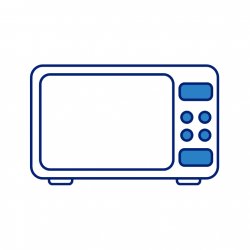Appliance Types
- Air Conditioner
- Automobile
- Chainsaw
- Circular Saw
- Dishwasher
- Drills
- Dryer
- Drywall Screw Gun
- Furnace
- Gas Fireplace
- Gas Grill
- Gas Patio Heater
- Grinder
- Heat Pump
- Impact Driver
- Impact Wrench
- Microwave
- Nailer
- Orbital Sander
- Pool Heaters
- Powerwall
- Range
- Refrigerator
- Television
- Washer
- Water Heater
Appliance Brands
- A.O. Smith
- AccuCold
- Admiral Craft
- AGA
- Airrex
- Amana
- Ambiance
- American Range
- American Standard
- American Water Heaters
- Aquacal
- Armstrong
- Asko
- Avanti
- Avenlur
- Azure
- Beko
- Bellfires
- Bertazzoni
- Blackstone
- Blaze
- Blomberg
- BlueStar
- Bosch
- Bradford White
- Bromic
- Bryant
- Cafe
- Calcana
- Capital
- Carrier
- Char-Broil
- Char-Griller
- Chrysler
- Coates
- Coleman
- Comfortmaker
- Commercial Chef
- Continental
- Cosmo
- Cove
- Crown Verity
- Dacor
- Daikin
- Danby
- Danfoss
- DaVinci
- DCS
- Deco
- DeWALT
- Ducane
- Dyna-Glo
- Dyson
- EcoSmart
- Electrolux
- Element4
- Empava
- Equator
- Eurodib
- European Home
- Everdure
- Farberware
- Fhiaba
- FibroPool
- Fire Sense
- Fisher
- FiveStar
- Flare
- Flash Furniture
- Focus
- Ford
- Forno
- Forte
- Frigidaire
- Fulgor Milano
- Gaggenau
- GE
- General Motors
- GlowBrand
- Goodman
- Grundig
- GSW
- Haier
- Hayward
- Heatstar
- Heil
- Hestan
- Hisense
- Hitachi
- Hotpoint
- iio
- Ilve
- Impecca
- Ingignia
- Insignia
- JennAir
- John Wood
- Keeprite
- Kenmore
- Kenyon
- KitchenAid
- Kucht
- La Cornue
- Lennox
- LG
- Liebherr
- Lifetime
- Lion
- Luxaire
- Lynx
- Magic Chef
- Marvel
- Maytag
- McQuay
- MicroFridge
- Midea
- Miele
- Migali
- Monogram
- Montigo
- Mr Heater
- Napoleon
- Navien
- Nexgrill
- Noritz
- Panasonic
- Patio Comforts
- Payne
- Pentair
- Perlick
- PITT
- Premier
- Raypak
- Real Fyre
- Regency
- Reliance
- Rheem
- Rinnai
- Roma
- Ruud
- Saber
- Samsung
- Schwank
- Sharp
- Smeg
- Solas
- Sony
- Spartherm
- Speed Queen
- StaRite
- State Water Heaters
- Stiebel Eltron
- SubZero
- Summerset
- Summit
- SunGlo
- SunPak
- Sunpentown
- SunStar
- Superiore
- Takagi
- TCL
- TEC
- Tempstar
- Tesla
- Thermador
- Thor Kitchen
- Toshiba
- Town and Country
- Toyota
- Traeger
- Trane
- Twin Eagles
- U-Line
- Unique
- Vaillant Group
- Valor
- Verona
- Victory
- Viessmann
- Viking
- Vizio
- Weber
- Westinghouse
- Whirlpool
- Whynter
- York
- ZLINE
Article Categories
- Air Conditioners
- Appliance Care
- Appliance News
- Dishwasher News
- Drying Machines
- Furnaces
- Gas Fireplaces
- Microwaves
- Pool Heaters
- Refrigerators
- Stoves - Ranges
- Tips and Tricks
- Washing Machines
- Water Heaters
More Articles

Microwave Troubleshooting
A microwave oven (commonly referred to as a microwave) is an electric oven that heats and cooks food by exposing it to electromagnetic radiation in the microwave frequency range. This induces polar molecules in the food to rotate and produce thermal energy in a process known as dielectric heating. Microwave ovens heat foods quickly and efficiently because excitation is fairly uniform in the outer 25–38 mm (1–1.5 inches) of a homogeneous, high water content food item.
Microwave not heating
The diode converts the A/C power output of the transformer to D/C, doubling the voltage to nearly 5,000 volts. This high voltage powers the magnetron to heat the food. If the diode burns out, the magnetron won’t receive enough voltage to operate, preventing the microwave from heating. When the diode fails, it is often visibly burned out. Inspect the diode and if the diode is burned out, replace it. If inspecting the diode proves inconclusive, test it with a multimeter that uses a 9-volt battery or put a 9-volt battery in series with the diode. When the leads are reversed, the diode should only have continuity in one direction. (Warning: The microwave oven can store a lethal amount of electricity in its high voltage capacitor, even after the microwave oven has been unplugged. Due to the high running voltage and the potential for electric shock, it is extremely dangerous to replace the electronic components in a microwave. Only a licensed technician should replace the diode.)
Microwave not working
If too much current passes through the microwave circuitry, the line fuse will blow. If the line fuse blows, the microwave won’t start. To determine if the line fuse is at fault, use a multimeter to test it for continuity. If the fuse does not have continuity, replace it. In addition, you should investigate and resolve the problem that caused the fuse to blow. If you don’t resolve the underlying issue, the new fuse will blow too. (Caution: The microwave oven can store thousands of volts of electricity in its high voltage capacitor, even after the microwave oven has been unplugged. Due to the potential for electric shock, it is extremely dangerous to replace the electronic components in a microwave. Only a licensed technician should replace the line fuse.)
Microwave light bulb not working
The light bulb itself might be burned out. Replace the light bulb before replacing any of the parts associated with the light bulb
My Microwave Shuts Off After a Few Seconds
A door switch might be failing intermittently. Check each of the door switches for signs of overheating, arcing, or burning. If you don’t see any obvious signs of failure, use a multimeter to test each switch for continuity. If any of the switches is visibly damaged or only has intermittent continuity, replace it.
Microwave turntable not turning
Use a multimeter to test the motor for continuity. If the turntable motor does not have continuity, replace it.
Microwave buttons not working
To determine if the touchpad is defective, try pressing each of the buttons on the control panel. If some of the buttons respond correctly while others don’t, replace the touchpad.
Microwave display not working
If the display goes out partially, the display board is more commonly at fault. If the display isn’t working at all, either the main control board or the display board could be at fault.
Microwave turns on by itself
First, make sure that the touchpad is working properly. If the touchpad is working properly, the main control board is likely at fault. If the control board is defective, replace it.
Microwave is sparking or arcing
The waveguide cover might be damaged and shorting out. Try removing the waveguide cover and see if the problem resolves. If the waveguide cover is burnt or will not stay in place, replace it.




